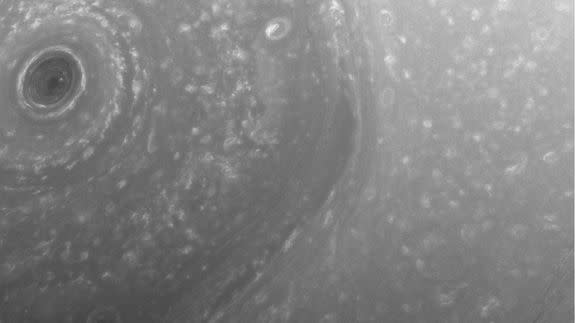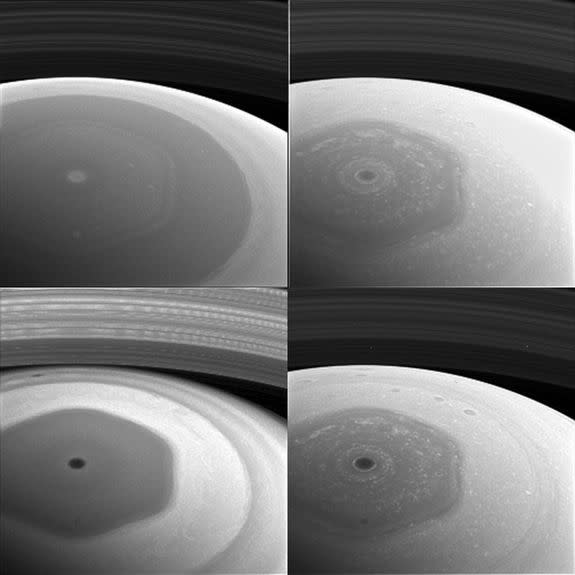These photos of a hexagon on Saturn are totally real

The Cassini spacecraft has been exploring Saturn, its moons and its rings for more than 10 years, but this week the daring probe did something special.
On Sunday, Cassini dove just outside Saturn's main rings as part of its latest mission, which will take it on 20 week-long orbits around the planet
About two days before that dive, Cassini snapped a series of photos showing off a view of Saturn's strange and beautiful hexagonal weather system in the planet's northern hemisphere.
SEE ALSO: This surreal image of Saturn is not a painting
The hexagon-shaped jet stream surrounds a giant storm in Saturn's north pole, but this isn't the first time the wild weather has been spotted by Cassini.
Other colorized images and even GIFs show the movement of the jet stream; however, these images mark the beginning of the end for its mission, which is set to come to a close next year.
"This is it, the beginning of the end of our historic exploration of Saturn," Carolyn Porco, Cassini imaging team lead, said in a statement.

Image: nasa
"Let these images — and those to come — remind you that we've lived a bold and daring adventure around the solar system's most magnificent planet," she added.
Cassini will make another pass of the rings' outer edge on Dec. 11, and these orbits should bring the mission through April 22, according to NASA.
After that, Cassini will make one more flyby of Saturn's largest moon Titan and then enter its "grand finale" which will include 22 "plunges" through the gap separating Saturn from its innermost ring, the space agency added.
Soak in these images now because after next year, we won't be getting anymore new close-up photos of Saturn and its many moons from Cassini.
The mission is set to come to an end with the probe's planned death-dive into Saturn's atmosphere on Sept. 15, 2017.
